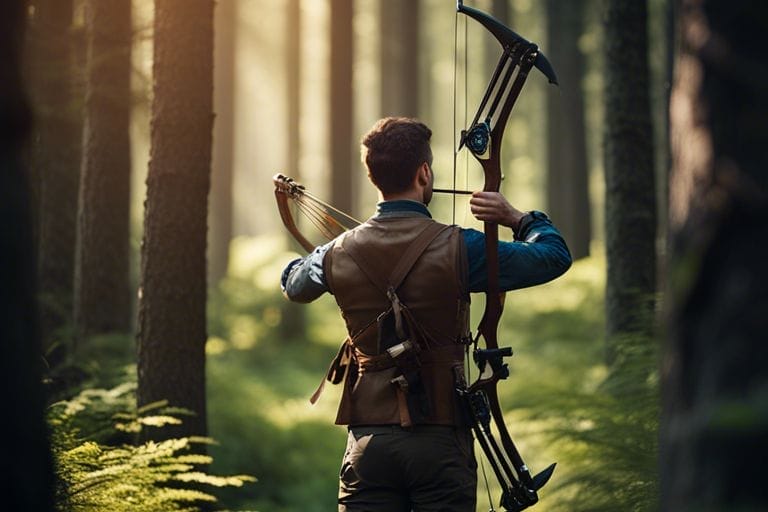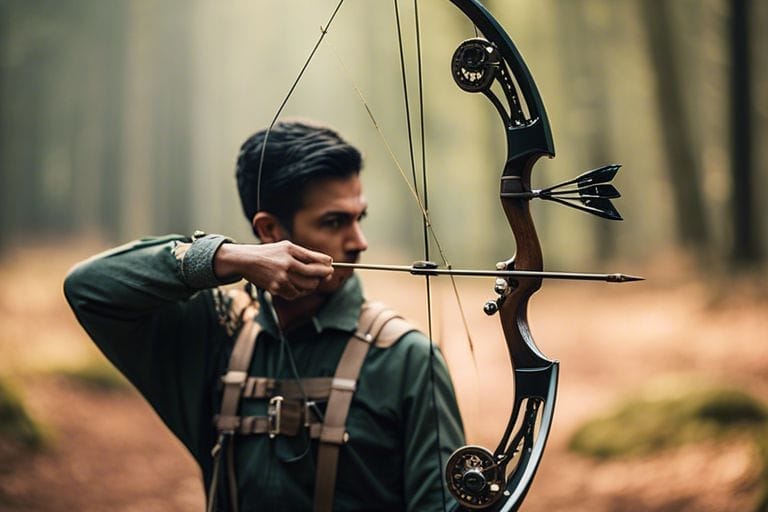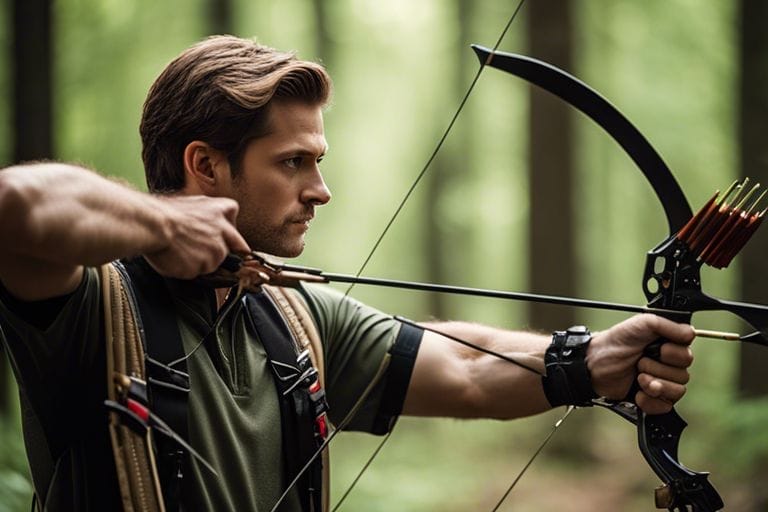Navigating the world of archery bows can be overwhelming, but with the right guidance, you can find the perfect one for your needs. When it comes to selecting an archery bow, there are a few important factors to consider. First and foremost, you need to determine your dominant eye and hand as this will influence the type of bow you should choose. Additionally, you’ll want to consider the draw weight and draw length, as well as the type of archery you’ll be participating in. Whether you’re a beginner looking for your first bow or a seasoned archer in search of an upgrade, this guide will help you navigate the options and make an informed decision that suits your individual needs.
Key Takeaways:
- Determine your purpose: Consider whether you will be using the bow for hunting, target shooting, or competition.
- Choose the right draw weight: Select a bow with a draw weight that is comfortable for you to handle and shoot accurately.
- Consider your budget and preferred bow type: Decide whether you want a traditional recurve bow, a compound bow, or a crossbow, and set a budget that aligns with your preferences.

Understanding Archery Bows
One of the first things you need to do when choosing an archery bow is to understand the different types available and their specific characteristics. This will help you make an informed decision based on your individual needs and preferences.
Types of Archery Bows
When it comes to archery bows, there are several options to choose from. Some of the most common types include:
- Recurve Bows
- Compound Bows
- Longbows
- Crossbows
- Traditional Bows
This variety of bows offers different performance characteristics, so it’s important to consider your skill level, hunting style, and overall shooting goals before making a decision. Assessing how each type of bow feels in your hands and performs in action will help you choose the one that best suits your needs.
Anatomy of a Bow
Understanding the different parts of a bow is essential for selecting the right one for you. A typical bow consists of the following components:
- Riser
- Limbs
- Bowstring
- Grip
- Sight or Peep Sight
Each part plays a crucial role in the functionality and performance of the bow. Familiarizing yourself with the anatomy of a bow will help you understand how it works and which features are most important to you in selecting the right bow for your archery pursuits.

Factors to Consider When Choosing a Bow
Now that you have decided to pursue archery, it’s time to choose the right bow for you. There are several factors to consider when making this important decision. By taking the time to carefully evaluate these factors, you can ensure that you select a bow that fits your needs and preferences.
- Draw Weight and Length
- Bow Size and Weight
- Handedness and Eye Dominance
- Price and Budget
- Intended Use
The key to finding the right bow for you is to carefully consider each of these factors before making a decision. By doing so, you can ensure that you choose a bow that will help you achieve success in your archery pursuits.
Draw Weight and Length
When choosing a bow, it’s essential to consider the draw weight and length. The draw weight is the amount of force required to pull the bowstring back, while the draw length is the distance the bowstring is pulled back. These factors are crucial because they directly impact your ability to shoot accurately and comfortably. It’s important to select a draw weight and length that aligns with your strength and size. Choosing a draw weight that is too heavy can result in shooting fatigue and inconsistency, while choosing a draw length that is too long or short can affect your accuracy.
Bow Size and Weight
The size and weight of the bow are also important considerations when making your selection. The size of the bow should be comfortable for you to handle, and the weight should be manageable for extended periods of use. A bow that is too heavy or bulky can be difficult to maneuver and can lead to fatigue. On the other hand, a bow that is too light may lack stability and accuracy. It’s crucial to find a balance that allows you to comfortably handle the bow while maintaining stability and control.
Bow Selection for Different Archery Styles
After you have determined whether you want a compound or recurve bow, the next step is to consider the specific style of archery you want to pursue. Different styles of archery require different types of bows, so it’s important to take this into consideration before making your purchase.
If you are unsure about which bow to get as a beginner to archery, you can find some helpful advice on Quora.
Target Archery
Target archery is a popular style where archers shoot at stationary targets from a set distance. If you are interested in target archery, you will want to choose a bow that is specifically designed for this type of shooting. Look for a bow with a longer axle-to-axle length and a lower draw weight to help you achieve accuracy and consistency in your shots.
Field Archery
Field archery involves shooting at targets of varying distances and terrains, simulating hunting conditions. For this style of archery, a versatile bow with a moderate draw weight and good maneuverability is ideal. You may want to consider a recurve bow for its simplicity and ease of maintenance in outdoor conditions.
Bowhunting
If you are interested in bowhunting, you will need a bow that is specifically designed for the rigors of hunting in the wild. A compound bow with a higher draw weight and a shorter axle-to-axle length is often preferred for its power and maneuverability in tight spaces. Make sure to choose a bow that is legal for hunting in your area and practice shooting in hunting scenarios to ensure accuracy in real-life hunting situations.
Maintenance and Care for Your Bow
For any archer, proper maintenance and care of your bow is essential to ensure its performance and longevity. Taking the time to regularly maintain and store your bow correctly will not only help to preserve its quality but also ensure your safety and accuracy while shooting. Here are some tips for keeping your bow in top condition.
Routine Bow Maintenance
It is important to regularly inspect your bow for any signs of wear and tear. Check for cracks, loose parts, or fraying of the strings and cables. Make sure to clean your bow regularly, removing any dirt, debris, or moisture that may have built up. It’s also a good idea to wax your bowstring to keep it in optimal condition. By keeping a regular maintenance schedule, you can catch any issues early on and prevent them from becoming more serious problems.
Storage and Transportation
When it comes to storing and transporting your bow, it’s important to handle it with care. Always use a protective case or cover to shield your bow from any potential damage. The case should also be used to store your bow when it’s not in use, keeping it in a cool, dry place away from direct sunlight and extreme temperatures. When transporting your bow, ensure it is properly secured to prevent any shifting or movement that could cause damage. By taking these precautions, you can help extend the life of your bow and maintain its performance over time.
Conclusion:
Upon reflecting on the various factors that go into choosing an archery bow, it is clear that finding the right bow for you requires careful consideration of your specific needs and preferences. By taking into account your experience level, intended use, draw length and weight, and budget, you can narrow down your options and make an informed decision. It is important to seek out professional advice and try out different bows before making a purchase, as the right bow can greatly impact your performance and enjoyment of the sport. Remember, choosing an archery bow is a personal decision, so take the time to find the perfect fit for you.
FAQ
Q: What factors should I consider when choosing an archery bow?
A: When choosing an archery bow, consider your dominant eye, draw length, draw weight, and shooting style. It’s important to find a bow that feels comfortable and suits your individual needs.
Q: What is the importance of draw weight when selecting a bow?
A: Draw weight is crucial as it determines how much force is required to pull the bowstring back. It’s essential to choose a draw weight that you can comfortably manage, ensuring that you can consistently and accurately shoot your bow.
Q: What are the different types of archery bows available and how are they different?
A: There are various types of archery bows, including recurve bows, compound bows, and traditional bows. Each type has its own unique design and advantages. Recurve bows are known for their simplicity and elegance, while compound bows use a system of pulleys and cables to provide a mechanical advantage. Traditional bows, such as longbows and flatbows, offer a classic and historical appeal. It’s important to choose a bow type that aligns with your skill level and shooting preferences.


